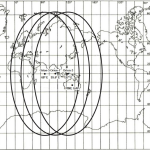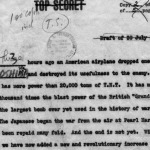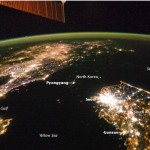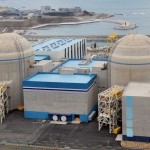
by Peter Hayes, Joan Diamond and Kiho Yi 16 December 2015 I. Introduction “Another way that civil…

by Peter Hayes, Joan Diamond and Kiho Yi 16 December 2015 I. Introduction “Another way that civil…

by Desmond Ball, Bill Robinson and Richard Tanter 24 November 2015 The full report is available here. NAPSNet Special Report I. Introduction The management of operations at the Pine Gap facility has become increasingly complex as the functions of the station have expanded, the number of agencies involved has grown, and the demands of a wider […]

by Andrew De Wit 26 October 2015 II. Introduction The present article argues that the LDP’s green-energy proponents aim at revitalizing local economies through renewable energy, growing strategic sectors of the economy, bolstering national security (especially energy security), enhancing resilience in the face of natural and other disasters, as well as dealing with the threat […]

Pine Gap’s initial and still principal importance to the United States lies in its role as a ground control and processing station for geosynchronous signals intelligence satellites. Nine geosynchronous SIGINT (signals intelligence) satellites have been operated by Pine Gap over the past 45 years. That role has grown as the satellites and their associated ground systems have developed in size, capacity and range of applications far beyond what was envisaged half a century ago – or understood by the host government that accepted the base at that time. During the ground station site selection process in 1966, one of the main criteria was that the horizon angle from the floor of the selected location and over the surrounding hills ‘should not exceed six degrees’. From Pine Gap’s latitude of 23.80° S and longitude of 133.74° E, this would allow connectivity (for both command and control and for data reception) with satellites stationed as far west as 60° E (or as far east as 153° W if ever required). The stations of the current three Orion SIGINT satellites controlled by Pine Gap make possible the collection of a wide range of signals across more than half the surface of the planet outside the polar regions – every continent except the Americas and Antarctica, and every significant region of contemporary US military concern. There is now just one US highly integrated geosynchronous signals intelligence satellite system, with comparable satellites operated by Pine Gap and Menwith Hill, with much greater capacities and much more focussed military roles than their Cold War equivalents.

by Kiho Yi and Peter Hayes with Joan Diamond, Steven Denney, Christopher Green, and Jungmin Seo 5 October 2015…

There is no single compelling factor to justify the bombings as inevitable, argues Peter Hayes. Rather, a series of decisions and events cumulatively drove the bomb forward from development to deployment at Hiroshima. The later nuclear attack on Nagasaki, moreover, was gratuitous.

In this paper, we describe the DPRK energy economy, including a description of recent trends in DPRK energy supply and demand. We then summarize the DPRK’s energy security situation and energy sector needs, along with a brief description of potential regional/international cooperation options for providing energy sector development assistance to DPRK. These options include conventional energy, energy efficiency, and renewable energy. They are followed with more general approaches to engagement and an example “package” of cooperation measures. These non-nuclear options are benchmarked to a quantitative estimate of the net present value of the two light water reactors that were to be provided in the US-DPRK Agreed Framework but never completed, as a reasonable benchmark, followed by a review of the DPRK nuclear energy sector and related potential cooperation options and issues related to the DPRK domestic pilot light water reactor and enrichment programs. We conclude by highlighting key insights and opportunities for increasing the DPRK’s energy security in the context of regional energy development in which all states have a stake.

by Peter Hayes and Roger Cavazos 14 September 2015 I. Introduction Peter Hayes and Roger Cavazos write “This chapter examines the increasingly complex problem of the threat posed by nuclear weapons of mass destruction (WMD) in Northeast Asia. The first section sketches the recent evolution of the role played by nuclear weapons in international affairs […]

Plans call for a continued expansion in South Korea’s fleet of nuclear reactors, but at the same time, facilities for the temporary storage of spent fuel, mostly in at-reactor pools, continue to fill up. Negotiations between the nuclear industry and central government agencies on one side, and local host communities on the other, for siting of interim spent fuel storage facilities, let alone permanent waste disposal facilities, have been largely ineffective to date, due in large part to a combination of the tactics used by authorities in approaching local communities, and a lack of unbiased information about nuclear facilities on the part of local stakeholders. In the last few years, a new effort to engage host communities has been undertaken, and shows some promise, though much work remains before agreements on facility siting can be reached.

Cities have become complex systems by virtue of their intersection with multiple global problems. Cities face …